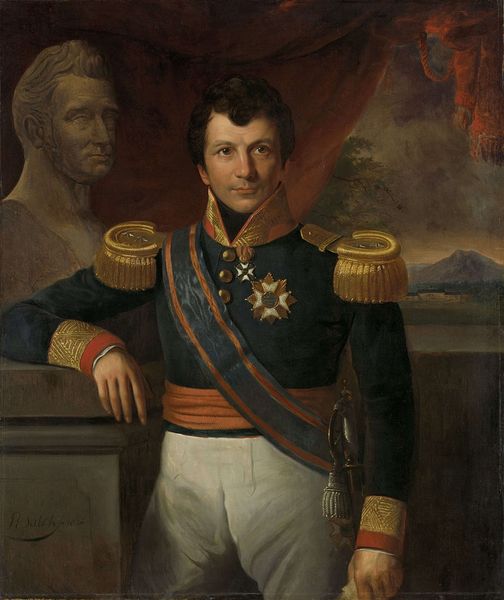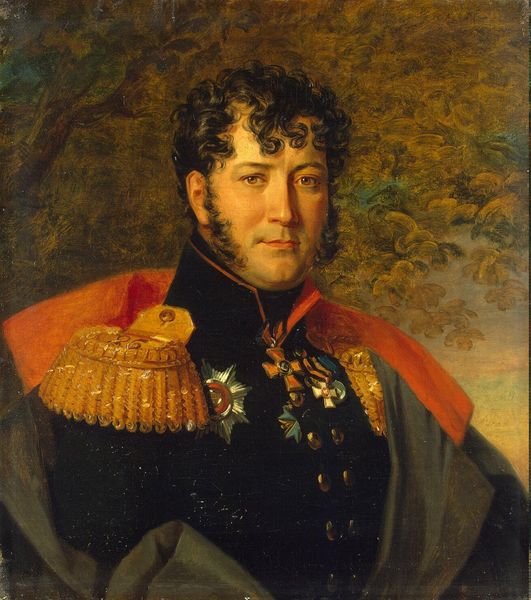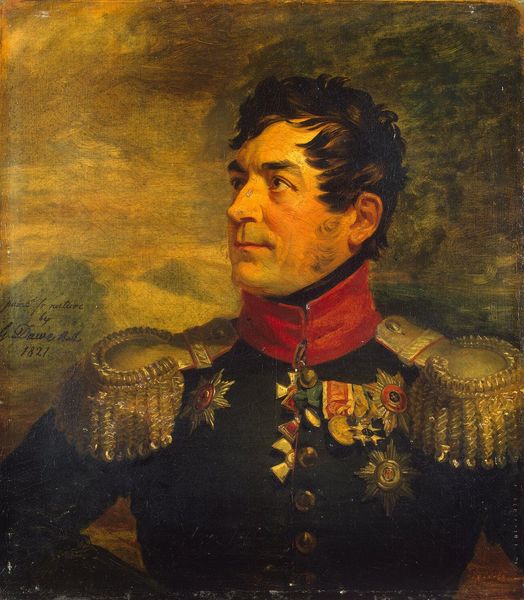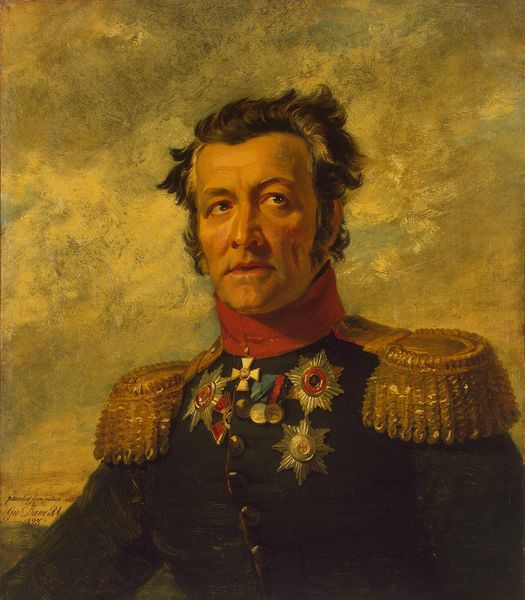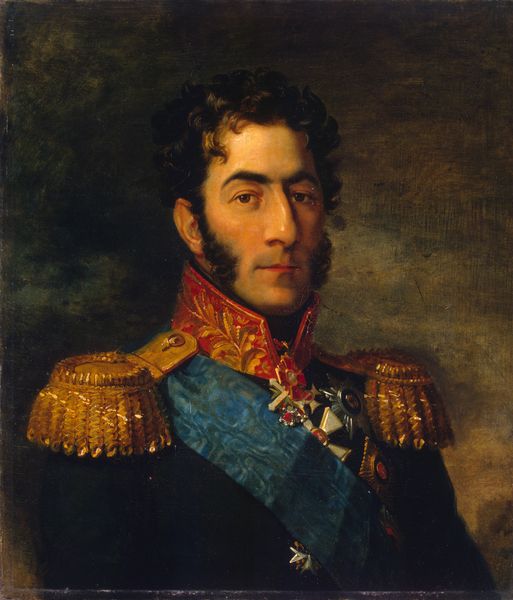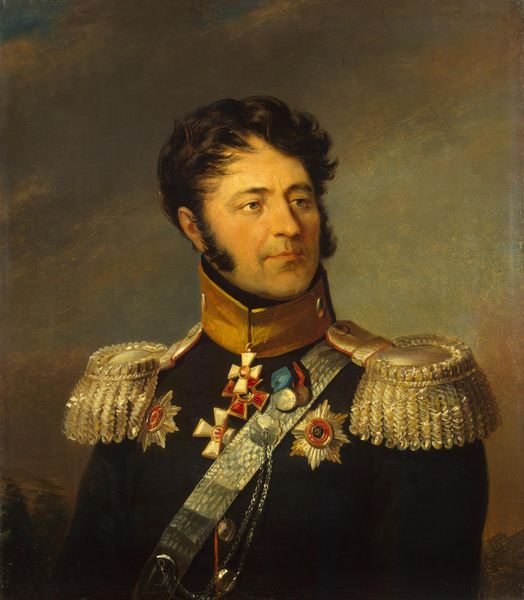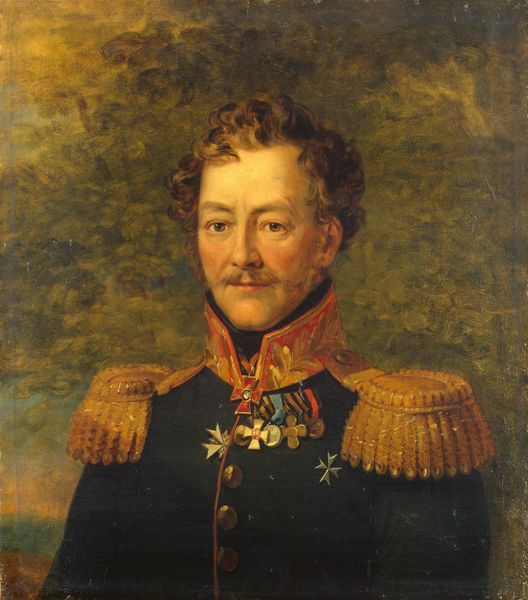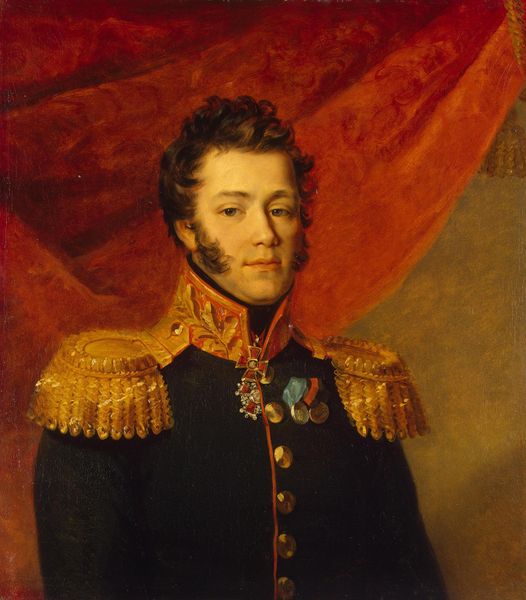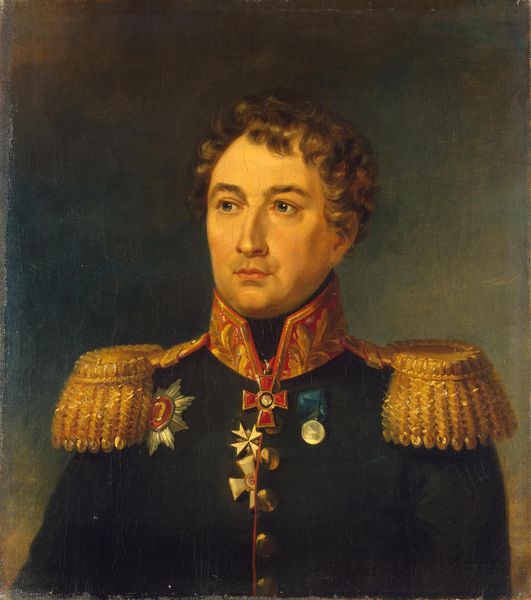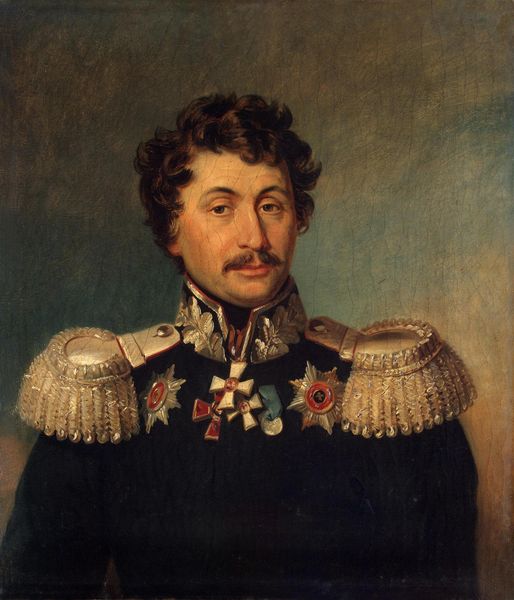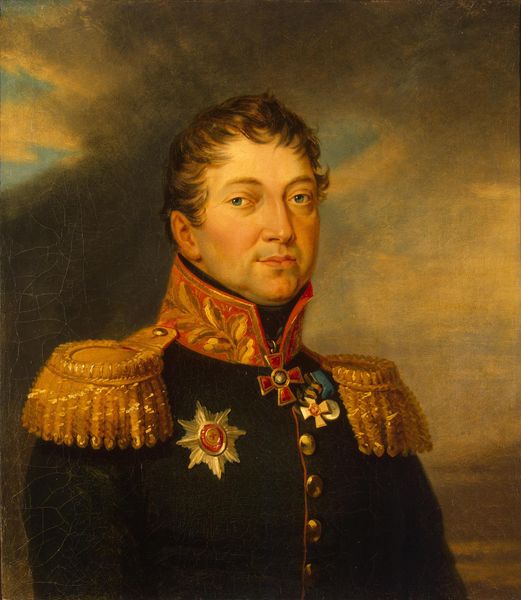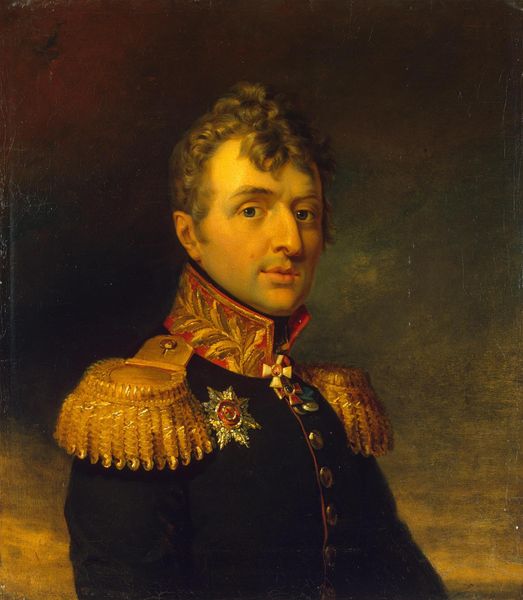
painting, oil-paint
#
portrait
#
painting
#
oil-paint
#
romanticism
#
history-painting
Dimensions: height 78.8 cm, width 64.7 cm, thickness 3.1 cm, height 87.4 cm, width 73.3 cm, depth 10 cm
Copyright: Rijks Museum: Open Domain
Curator: Looking at Jan Willem Pieneman's "Portrait of Lieutenant-General Frederik Knotzer", created around 1832 and held here at the Rijksmuseum, I'm immediately struck by the rather stoic yet somber aura. Don't you think? Editor: It's more than somber; there's a world-weariness in his eyes, wouldn’t you say? Almost as if he has seen too much. The loose brushstrokes definitely lend to a romantic-era sensibility. Curator: Precisely. His uniform is richly detailed. The bright gilded epaulettes and the stark red trim almost symbolize the inherent dangers of military honor and ambition. The tent in the background, rendered almost ethereally, might symbolize campaigns fought and perhaps battles lost. Editor: True, the epaulettes serve almost as golden haloes – highlighting not divine, but earthly power. And medals pinned on his chest could be construed as a symbolic ledger of his achievements...and the toll it all has taken on his spirit. Curator: These history paintings frequently aimed at immortalizing a subject's legacy; they were essentially building a myth for posterity. Considering Knotzer’s position in the military during that time, what can you deduce about the society from the painting? Editor: Dutch society during this period was consolidating itself after Napoleonic times, with an eagerness for stability yet also maintaining respect for military achievements. The stiff pose hints at the pressures put upon public figures like Knotzer: to simultaneously exhibit both authority and controlled emotion. Curator: His averted gaze invites projection and contemplation. This painting becomes less a record of Knotzer’s literal visage and more a psychological space for interpreting concepts of service and national identity in this formative time for the nation. Editor: Absolutely. Even small touches like the barely perceptible background landscape contribute. Is that tent a place of refuge or another symbol of relentless campaigns endured, and how the burden weighs even after those conflicts conclude? Curator: Exactly! I notice we have both looked at it using our knowledge, which hopefully enhances your impression as a viewer and also maybe directs you to consider some of these same details next time. Editor: This conversation really reveals the strength in these art objects in our care to continue being a conduit for us to analyze who we were as we reflect on who we aspire to be.
Comments
No comments
Be the first to comment and join the conversation on the ultimate creative platform.

